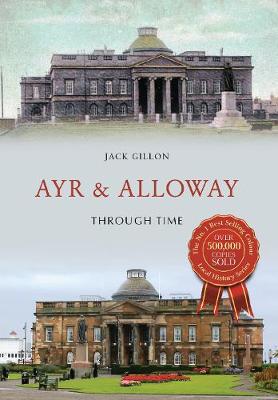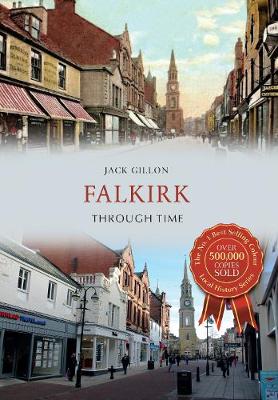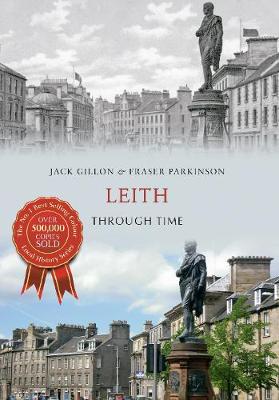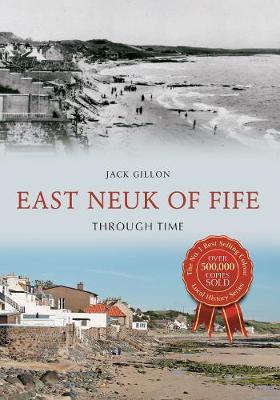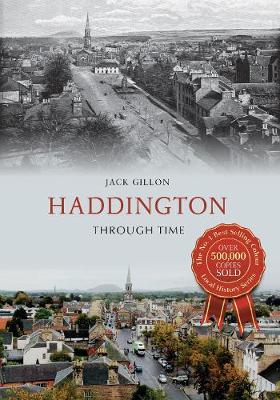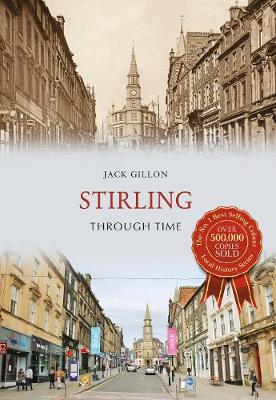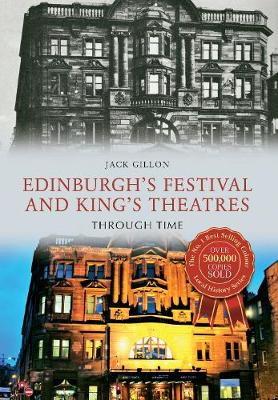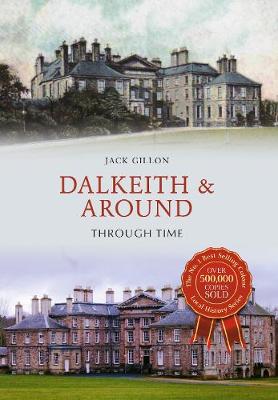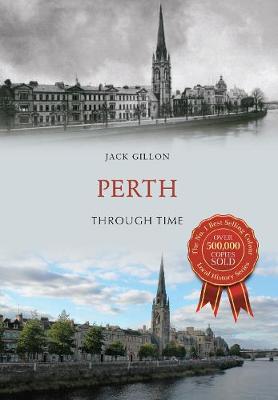Through Time
11 total works
Alloway is a picturesque village situated to the south of Ayr. The renown of the village is based on its associations with Robert Burns, Scotland’s national poet, and his most popular poem – ‘Tam O’Shanter’. This collection of old and new photographs from writer and historian Jack Gillon will appeal to everyone who knows and loves the ‘Land of Burns’.
Using old images juxtaposed with modern photography, in Falkirk Through Time author Jack Gillon explores how the town has changed and developed over the years. Today Falkirk has a bustling town centre focused on its pedestrianised High Street and boasts popular tourist attractions such as the new Helix Park, Falkirk Wheel and the breathtaking Kelpie statues, all of which complement and build upon its industrial heritage.
Leith has played a long and prominent role in Scottish history. As the major port serving Edinburgh, it has been the stage on which many significant events in Scottish history have taken place. From housing the Scottish Court to seeing civil war, being the port of call for royal arrivals and becoming its own burgh, Leith has seen it all. Leith Through Time takes you on this journey, with old and new images to illustrate how Leith has changed over the years.
These villages, running from from Crail to Largo, are quite distinct from those of any other part of Scotland and have stood almost unchanged for centuries and thus present, in their uneven, angular streets, red-tiled roofs and crow-stepped gables, an accurate representation of the ancient burghs of our past.
Haddington suffered significantly in the wake of English invasions and disastrous floods, and it was also burned to the ground a number of times over the centuries. Despite this, the town continued to grow and prosper, as can be seen in its striking architecture. Today, Haddington's rich history is evident with its wide streets and grand buildings, including St Mary's kirk, the Town House and Lennoxlove Castle.
Its strategic importance as the ‘Gateway to the Highlands’ also made it the much fought-over ‘Cockpit of Scotland’, making it witness to many of the most significant battles in Scottish history. Today, Stirling is a bustling and charming historic city that retains much of its ancient character and architectural quality. Using a beautiful collection of old and new images, Stirling Through Time explores how Stirling has transformed and evolved over the years.
In 1975, the South Side was declared a conservation area. This reversed the wave of demolition and resulted in the regeneration of the area and the retention of its historic identity. The mix of communities make it one of the most colourful areas of Edinburgh, and it holds a special place in the hearts of current and past residents. Edinburgh South Side Through Time takes you on this journey, with old and new images to illustrate how this part of the city has changed over the years.
The picturesque town of Melrose is the location of Melrose Abbey, one of the most beautiful monastic ruins in Britain. It is also the site of the burial of the heart of Scottish King Robert the Bruce. Sir Walter Scott also has close associations with the Melrose area and his home at Abbotsford is a much-visited tourist attraction.
The glass frontage of the Festival Theatre forms a glowing night-time landmark on Nicolson Street, and encloses a magnificent auditorium which dates back to 1928. It stands on Edinburgh's longest continuous theatre site, dating as far back as 1830. This book traces the history of the site from its earliest days, through its time as the Empire Palace, its reconstruction as the Empire and its final transformation into the Festival Theatre.
The surrounding villages also have their fair share of historical significance: Newtongrange was Scotland’s largest mining village in the 1890s and today houses the National Mining Museum; Bonnyrigg was a mining village until the 1920s; Lasswade was a popular holiday resort in the nineteenth century for wealthy Edinburgh residents; and in nearby Roslin is Rosslyn Chapel, famous for its connections to the Knights Templar and the Holy Grail and which featured in The Da Vinci Code.
Today, Perth is a major tourist centre and important staging post on the route north to the Highlands of Scotland. As such, it boasts many shops, bars and restaurants as well as a thriving arts and cultural scene. Join author Jack Gillon as he shows how the city has changed and how much of its proud heritage remains.
